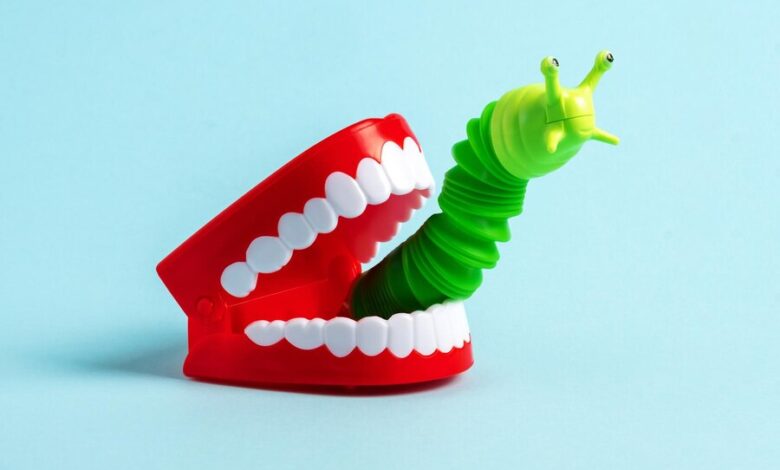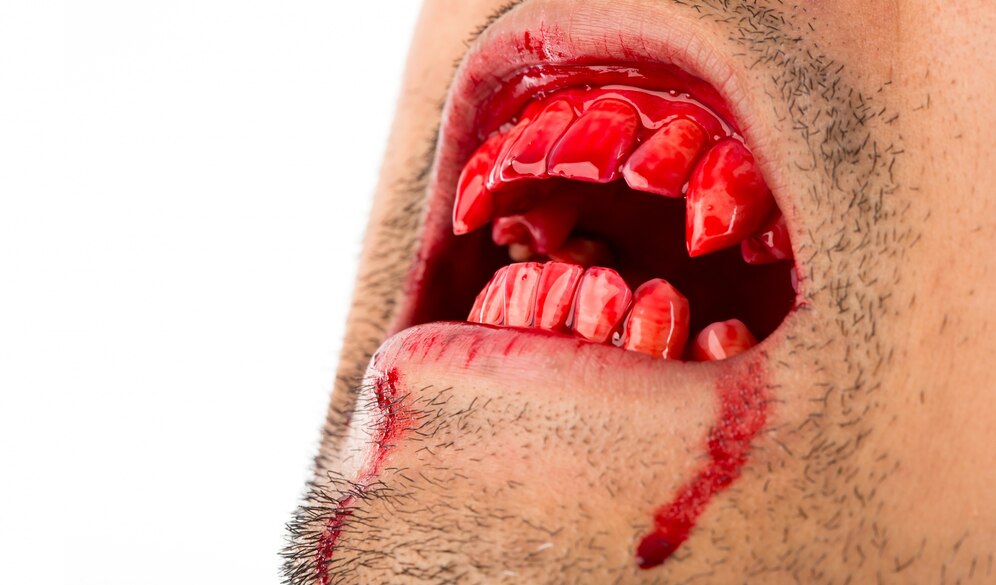Mouth Larva: Understanding Oral Myiasis and Its Impact on Health

The world of medical science holds many mysteries, and one of the most unsettling phenomena is the occurrence of parasites living inside the human body. One particularly rare and disturbing condition is oral myiasis, commonly known as “mouth larva.” Though it is rare, the condition can have significant effects on a person’s health and well-being. This article will delve into the causes, symptoms, treatments, and prevention of mouth larva, offering insights into this unusual and often alarming condition.
What Is Mouth Larva?
Mouth larva, medically referred to as oral myiasis, is a parasitic infestation where larvae (typically of certain fly species) invade the human mouth, often leading to a range of distressing symptoms. This condition is a type of myiasis, which is a parasitic infection caused by fly larvae. These larvae can infest various parts of the body, including the skin, eyes, and most disturbingly, the oral cavity.
While it may sound like something from a horror story, mouth larva is a real medical condition, though it is extremely rare in healthy individuals. It generally occurs in cases of severe neglect, poor hygiene, or underlying health conditions that weaken the immune system.
The Causes of Mouth Larva
The primary cause of mouth larva is the infestation of the oral cavity by fly larvae, specifically from species such as the green bottle fly (Lucilia sericata) or the screwworm fly (Cochliomyia hominivorax). These flies lay eggs in decaying organic matter, and the larvae hatch and begin feeding on the tissue. In the case of oral myiasis, the larvae can enter the mouth and feed on the soft tissues, including the gums, tongue, and inner cheeks.
There are several risk factors that can increase the likelihood of developing mouth larva:
1. Poor Hygiene
Inadequate oral hygiene can lead to the accumulation of food particles and other organic matter in the mouth, which attracts flies. People who have difficulty maintaining good oral hygiene are at a higher risk of developing myiasis.
2. Wounds or Ulcers in the Mouth
Open sores or wounds in the mouth provide an entry point for fly larvae. These wounds can be the result of trauma, dental surgery, or even untreated infections that compromise the mucosal barriers of the oral cavity.
3. Compromised Immune Systems
Individuals with weakened immune systems, such as those suffering from HIV/AIDS, diabetes, or cancer, are more susceptible to parasitic infestations. These people may have less effective defenses against foreign invaders, including larvae.
4. Neglect or Living in Unsanitary Conditions
People living in environments with poor sanitation or who experience neglect (e.g., homeless individuals or those living in squalid conditions) are more likely to suffer from conditions like oral myiasis. Flies are more likely to find breeding grounds in environments with decaying food, waste, and other organic matter.
Symptoms of Mouth Larva Infestation
The symptoms of mouth larva vary depending on the severity of the infestation and the specific areas of the mouth affected. However, common symptoms include:
1. Pain and Discomfort
An infestation of larvae in the mouth can cause significant pain, especially when the larvae move or feed. Individuals may experience sharp or throbbing pain in the affected area.
2. Swelling and Inflammation
The tissues in the mouth, including the gums, tongue, and inner cheeks, may become swollen and inflamed as the larvae burrow and feed.
3. Foul Odor
One of the hallmark signs of mouth larva is a strong, foul odor emanating from the mouth. This odor is due to the larvae feeding on the tissues and the decomposition of organic material.
4. Visible Larvae
In some cases, it may be possible to see the larvae inside the mouth, especially if the infestation is severe. The larvae typically appear as small, white or yellowish worms.
5. Bleeding
If the larvae damage blood vessels or tissues while feeding, it can lead to bleeding in the mouth, which may appear as blood in saliva or around the gums.
6. Difficulty Swallowing or Speaking
Severe infestations may interfere with basic functions such as swallowing, speaking, or chewing. This is due to the pain and swelling caused by the larvae in the oral cavity.
Diagnosis of Mouth Larva
If you suspect you or someone you know has a mouth larva infestation, it’s important to seek medical attention immediately. A healthcare provider will typically diagnose oral myiasis through a physical examination of the mouth. In some cases, they may use imaging techniques such as X-rays or CT scans to assess the extent of the infestation, particularly if larvae have penetrated deeper tissues.
A definitive diagnosis often involves identifying the larvae, which may be visible in the mouth. In some cases, a sample of the larvae can be collected for laboratory analysis to confirm the species and ensure proper treatment.
Treatment Options for Mouth Larva
The treatment of mouth larva typically involves two primary goals: removing the larvae and treating any infection or damage caused by the infestation. Treatment is often a combination of mechanical and medical intervention.
1. Manual Removal of Larvae
The first step in treating mouth larva is to manually remove the larvae from the mouth. This can be done by carefully cleaning the affected area or using specialized tools to extract the larvae. This step must be done by a trained healthcare professional to avoid further injury or spreading the infestation.
2. Antibiotics and Antiseptics
Once the larvae are removed, the healthcare provider may prescribe antibiotics to treat any secondary infections caused by the larvae. Antiseptic mouth rinses or topical treatments may also be used to disinfect the oral cavity and prevent further bacterial growth.
3. Pain Management
Managing pain and discomfort is a key part of treatment. Over-the-counter pain relievers like ibuprofen or acetaminophen may be recommended to help alleviate pain and reduce swelling.
4. Surgical Intervention
In rare cases, when the infestation is severe, surgical intervention may be required to remove larvae that have burrowed deep into the tissues. This is typically done in a hospital setting under anesthesia.
5. Follow-up Care
After the larvae have been removed and the mouth is treated, follow-up care is crucial to ensure that there are no residual infections or complications. Regular dental check-ups and good oral hygiene practices can help prevent future infestations.
Preventing Mouth Larva Infestation
Preventing mouth larva infestations is largely a matter of maintaining good hygiene and addressing any underlying health conditions that may predispose individuals to parasitic infections. Here are some preventive measures:
1. Good Oral Hygiene
Regular brushing and flossing, along with routine dental check-ups, can help keep the mouth clean and free from decaying food or other organic matter that might attract flies.
2. Treating Oral Wounds Promptly
Any open sores, cuts, or ulcers in the mouth should be treated promptly to prevent flies from laying eggs in the area. If you have a wound or infection, visit a dentist or doctor for proper care.
3. Improving Immune Health
People with compromised immune systems should take extra care to maintain their overall health. Proper nutrition, hydration, and regular medical check-ups can help boost the immune system and prevent infections.
4. Living in Clean Environments
Maintaining a clean living environment is essential for preventing infestations. Ensure that food waste is properly disposed of, and practice good sanitation to avoid attracting flies.

Conclusion
Though rare, mouth larva (oral myiasis) is a serious condition that can have severe consequences if left untreated. Understanding the causes, symptoms, and treatment options can help individuals protect themselves and seek timely care if necessary. By maintaining proper hygiene and taking preventive measures, most people can avoid the risk of this unsettling infestation.
If you suspect a mouth larva infestation or have concerns about oral health, seek professional medical advice to ensure swift and effective treatment. With the right care, this condition can be managed, allowing individuals to regain their health and well-being.

